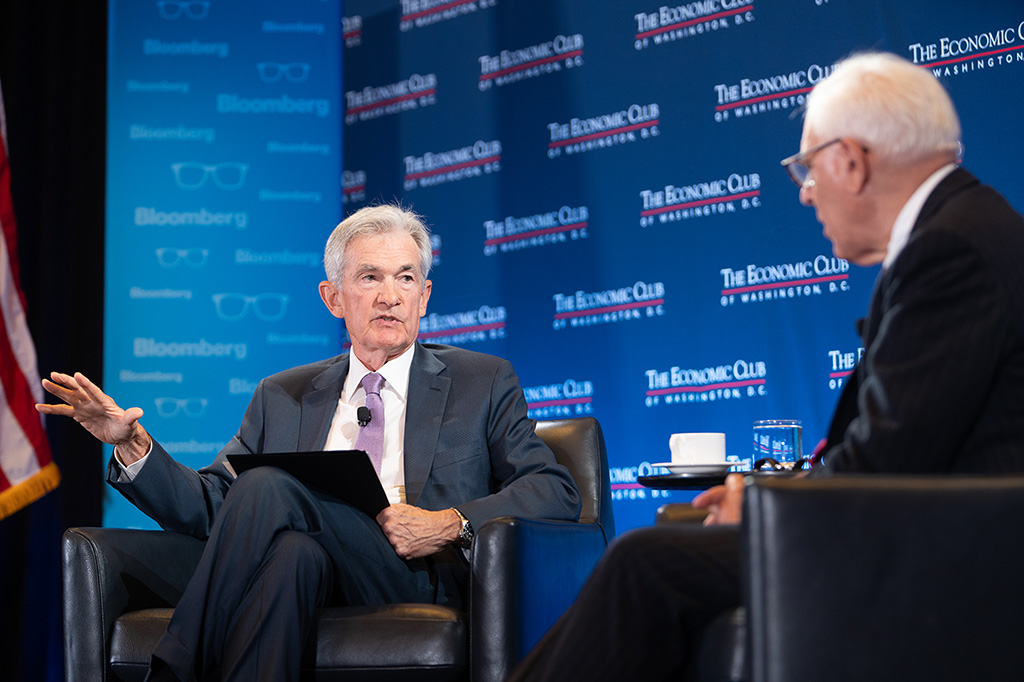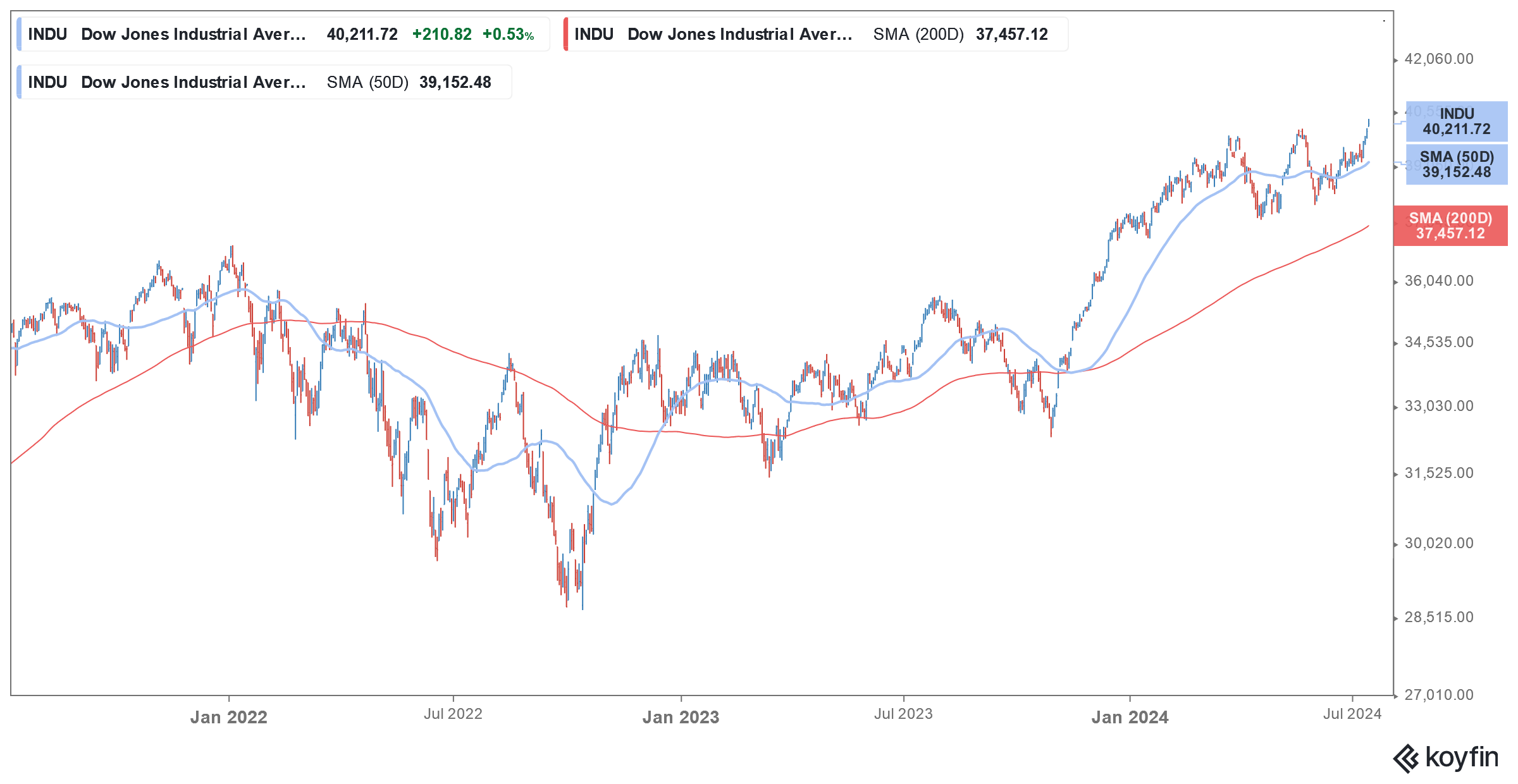
Over the last couple of weeks, Fed chair Jerome Powell has made some dovish comments about rate cuts. In the most recent instance speaking at the Economic Club of Washington D.C. Powell said that the Fed won’t wait for inflation to fall below 2% before it starts cutting rates.
As part of the discussion with David Rubenstein, chairman of the Economic Club of Washington, D.C., and co-founder of The Carlyle Group, Powell said “The implication of that is that if you wait until inflation gets all the way down to 2%, you’ve probably waited too long, because the tightening that you’re doing, or the level of tightness that you have, is still having effects which will probably drive inflation below 2%.”
Powell said the Fed might not wait for inflation to fall below 2%
Incidentally, in 2020, the Fed changed its approach and now targets an average inflation of 2%. The mandate gives it more leeway in deciding on monetary policy, unlike the previous framework where it strived to keep inflation below 2% at all times.
The recent inflation readings have shown continued progress towards the 2% goal and the June CPI (consumer price index) was 3% on an annualized basis. The so-called core CPI rose 0.1% from May which was the slowest pace since August 2021.
US annualized CPI peaked at 9.1% in June 2022 and has since moderated – even as it is still a long way for it to hit the 2% that the Fed targets. However, the pace of increase has moderated.
Commenting on inflation, Powell said at the event, “We’ve had three better readings, and if you average them, that’s a pretty good pace.” He added that these figures, “do add somewhat to confidence” that inflation is falling sustainably.
Fed is getting more confident about cutting rates
At the June meeting, the Fed held interest rates steady – something it has done for the last year. The minutes said that “Members agreed that they did not expect that it would be appropriate to reduce the target range until they have gained greater confidence that inflation is moving sustainably toward 2 percent.”
The May CPI data showed inflation rising 3.3% YoY which was 10 basis points lower than what analysts were expecting. Notably, the Fed has a dual mandate and strives for a healthy labour market along with keeping inflation at 2%. In the past, Fed chair Jerome Powell has argued that a strong labour market was fueling inflation and making the task of bringing it back to 2% difficult.
The US labour market is also softening
Notably, the term “labor” featured 32 times in the minutes of the Fed’s June meeting. The minutes said that “demand and supply in the labor market had continued to come into better balance.” June jobs data also show a softening of the labour market, The US economy added 206,000 jobs in June which was slightly higher than expected. However, the Labor Department downwardly revised the nonfarm payroll data for April and May for a combined 111,000.
Also, the June unemployment rate was 4.1% which was higher than the 4% that economists had expected. Importantly, average hourly earnings rose 3.9% in June which was the slowest pace of increase since 2021.
Odds of a Fed rate cut rise
According to the CME FedWatch Tool, the odds of a 25-basis point rate cut in September is now almost 90%. The odds were 62% a month back. Importantly, none of the traders see rates at current levels after the September meeting and 10% see a 50 basis point rate cut by then,
The Fed has been on a rate-hiking spree since March 2022. It raised rates by 25 basis points in March 2022 and by 50 basis points in May. In the next four meetings, it raised rates by 75 basis points each before lowering the pace of hikes to 50 basis points in December.
The US central bank raised rates four times in 2023 by 25 basis points each. Currently, the Fed fund rates are 5.25%-5.50% which is the highest since 2001. Amid the Fed’s rate hikes, the yields on the 10-year Treasury spiked to 5% last year for the first time since 2007. The yields since came and were around 3.8% at the end of 2023 but have since risen and currently stand at around 4.2%.
Powell has talked about the risks of cutting rates too late
In his prepared remarks for the Senate testimony earlier this month, Powell said, “Reducing policy restraint too late or too little could unduly weaken economic activity and employment.”
He added, “In light of the progress made both in lowering inflation and in cooling the labor market over the past two years, elevated inflation is not the only risk we face.”
Powell alluded to the softening of the US economy and emphasized, “in light of the progress made both in lowering inflation and in cooling the labor market over the past two years, elevated inflation is not the only risk we face.”
All said, while markets now see a September rate cut as a done deal, Powell and company have disappointed markets on more than one occasion over the last year. Would it be different this time and we would see a rate cut by September? We’ll have to wait and see, but given the recent economic data points that show cooling inflation and softening labour markets, a rate cut looks quite likely – unless of course data over the next couple of months signals otherwise.


Question & Answers (0)